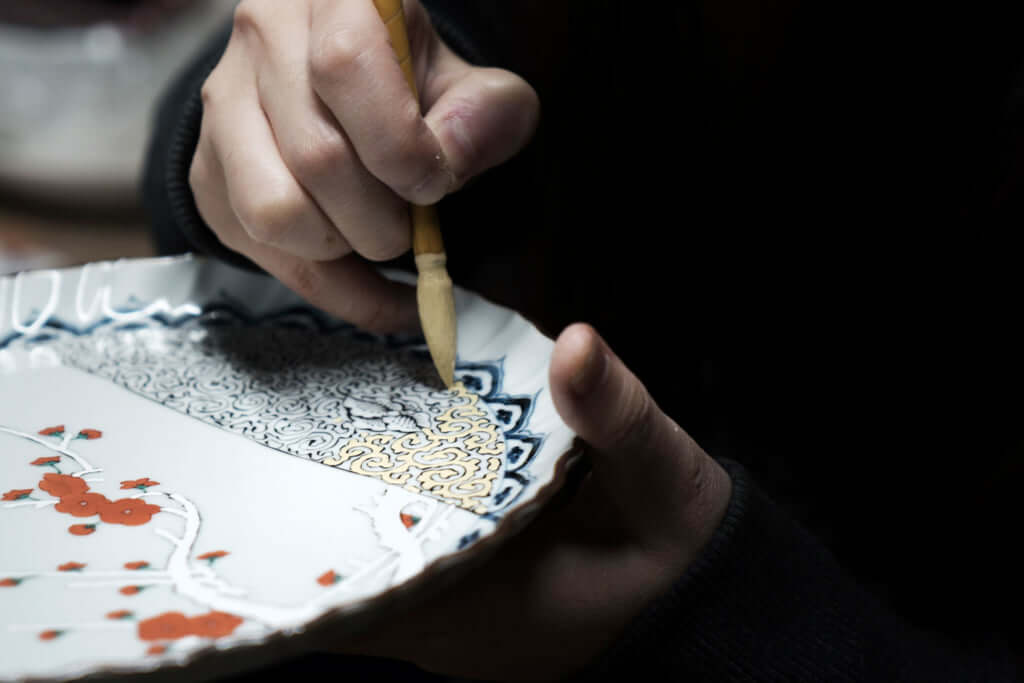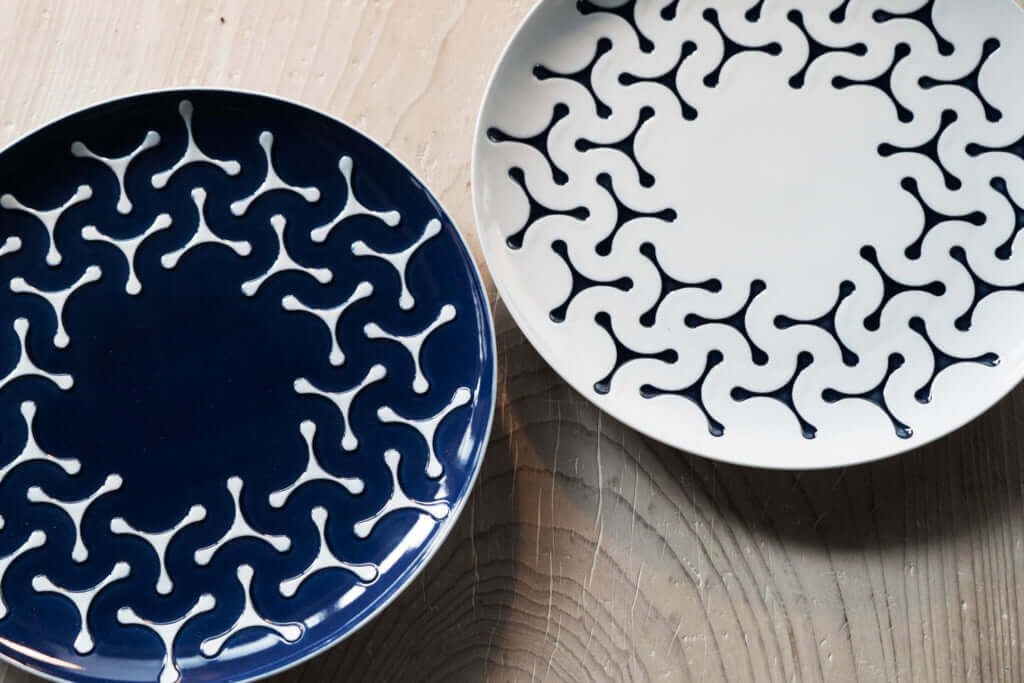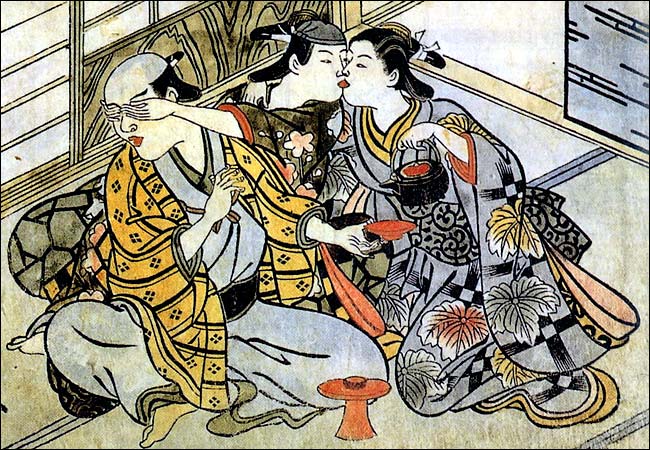The Ever-changing Arita-ware
Kyushu on the Table: Pairing Kyushu Specialties with French Cuisine #02
Saga Prefecture’s Arita is the birthplace of Japan’s porcelain tradition. It started in 1616 with Yi Sam-pyeong, a potter from Korea who’s still considered The God of Pottery. Japan’s unique aesthetic sense lended itself well to a rich ceramic culture, producing famous potteryware such as Imari-ware (or Arita-ware), which is renowned for its beauty and distinction around the world.

Craftsmen glaze following the strict standards that produce Riso Porcelain grade pottery. http://www.risogama.jp/about_riso_english.html
Riso Porcelain, Ltd. focuses on merging tradition with innovation. The company’s founder, Shinji Terauchi, acquired Yi Sam-pyoeng’s former home for Riso Porcelain. Terauchi is pioneering the future of Arita-ware with innovative designs. One example is a plate he collaborated with the Tokyo 2020 Olympic logo designer, Asao Tokoro. The piece brings Asao’s rich geometric designs together with Terauchi’s sublime craftsmanship. Whether one knows pottery or not, it’s hard not to appreciate this piece of art. With textured pieces such as this, colours have to be applied with care, then it has to be fired with equal care. The tension between the two artists’ work makes this a dignified piece that’s sophisticated enough for Japanese cuisine, and delicate enough for French.

The plate made in collaboration with the Tokyo 2020 Olympics logo designer, Asao Tokoro.
Reviewing the history of Japanese pottery, Terauchi expresses an interesting perspective, ‘Japan is a bowl culture. Since the Edo Period, bowls have had a place on the table as decorations holding potted plants. These were so small that they could fit in the palm of one’s hand. Therefore, they were used to garnish the table in much the same way a candle does’, says Terauchi. He has made several of these palm-sized pots using Arita-ware techniques. Terauchi feels strongly that innovation demands understanding and applying past traditions.

A palm-sized pot for house plants. A modern style that adds a decorative touch succulents.
TRENDING
-
The Tattoos that Marked the Criminals of the Edo Period
Traditional tattoos were strong signifiers; murderers had head tattoos, while theft might result in an arm tattoo.

-
Colour Photos of Yakuza Tattoos from the Meiji Period
19th-century photographs have captured the usually hidden tattoos that covered the bodies of the members of Japanese organised crime gangs.

-
The Trendiest ‘Sento’ and Saunas in Tokyo
The bath culture remains vibrant in the capital city, where public baths and saunas designed by renowned architects are continuously opening.

-
Rituals of Ancient Gay Shunga Erotica
Shunga was prolific in Japan during the Edo period, with ‘nanshoku’ referring to the depiction of homosexual erotica.

-
‘LSD: Dream Emulator’, an Avant-Garde Game Released on PlayStation
In this video game created by Osamu Sato and released in 1998, the player explores the surrealist, psychedelic environment of a dream.





